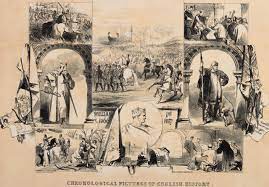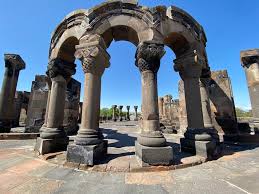Exploring the Enchanting Charms of Yerevan

The Enchanting City of Yerevan
Nestled at the foot of the majestic Mount Ararat, Yerevan stands as the beating heart of Armenia, blending ancient history with modern vibrancy. As the capital and largest city of Armenia, Yerevan captivates visitors with its rich cultural heritage and warm hospitality.
One of the city’s most iconic landmarks is the Cascade Complex, a grand staircase adorned with contemporary art installations and offering panoramic views of the cityscape. Stroll through the bustling streets of Northern Avenue, lined with trendy boutiques and cafes, or explore the historic charm of Republic Square, home to elegant fountains and government buildings.
Yerevan is a paradise for food enthusiasts, boasting a diverse culinary scene that showcases traditional Armenian dishes alongside international flavours. Indulge in succulent kebabs, aromatic dolma, and freshly baked lavash bread at local eateries that exude warmth and authenticity.
Art and culture thrive in Yerevan, with museums like the Matenadaran Manuscript Repository housing ancient manuscripts and artifacts that offer insights into Armenia’s rich past. The Vernissage Market is a treasure trove of handmade crafts, jewellery, and artworks crafted by local artisans.
As night falls, Yerevan transforms into a lively hub of entertainment, with bars, clubs, and live music venues beckoning visitors to immerse themselves in the city’s vibrant nightlife. Whether you seek relaxation in parks like Lover’s Park or adventure in nearby natural wonders like Garni Gorge, Yerevan offers something for every traveller.
With its blend of old-world charm and modern allure, Yerevan invites you to discover a land where history whispers through cobblestone streets and hospitality embraces you like an old friend. Come experience the magic of Yerevan – a city that captivates hearts and leaves lasting impressions on all who wander its enchanting streets.
Exploring Yerevan: Worth a Visit, Historical Names, Language Insights, and Safety Tips
- Is Yerevan worth seeing?
- What is the old name of Yerevan?
- What language do they speak in Yerevan Armenia?
- Is it safe to visit Yerevan now?
Is Yerevan worth seeing?
For those seeking a captivating blend of history, culture, and modern vibrancy, Yerevan is undoubtedly worth seeing. As the capital of Armenia, Yerevan offers a unique charm that appeals to travellers of all interests. From its ancient landmarks and museums showcasing rich heritage to its bustling markets and vibrant nightlife, Yerevan has something to offer every visitor. The city’s warm hospitality, delicious cuisine, and stunning views of Mount Ararat make it a must-see destination for those looking to immerse themselves in the beauty and allure of Armenian culture.
What is the old name of Yerevan?
The old name of Yerevan, the capital city of Armenia, is Erebuni. Erebuni dates back to ancient times when the city was founded by King Argishti I of Urartu in 782 BC. The name Erebuni reflects the city’s rich history and heritage, serving as a reminder of its ancient origins and enduring significance in the region. Today, while known as Yerevan, the spirit of Erebuni lives on in the city’s archaeological sites, museums, and cultural landmarks that continue to preserve its storied past for future generations to appreciate and explore.
What language do they speak in Yerevan Armenia?
In Yerevan, Armenia, the predominant language spoken is Armenian. Armenian is an ancient Indo-European language with its own unique script and rich linguistic heritage. While Armenian is the official language of Armenia, you may also hear Russian and English being spoken in Yerevan, especially in tourist areas and among the younger population. The beauty of Yerevan lies in its multilingual environment, where visitors can immerse themselves in the melodic sounds of Armenian while also finding common ground through other widely spoken languages.
Is it safe to visit Yerevan now?
Travellers often wonder, “Is it safe to visit Yerevan now?” The answer is a resounding yes. Yerevan, the capital of Armenia, is known for its welcoming atmosphere and overall safety for visitors. The city boasts low crime rates and a peaceful environment, making it a popular destination for tourists seeking to explore its cultural treasures and vibrant streets. With friendly locals, well-maintained infrastructure, and a strong sense of community, Yerevan offers a secure and enjoyable experience for travellers from around the world.



